IDP Dynasty Fantasy Football: Why First-Round Rookie Edge Rushers are Falling in Drafts
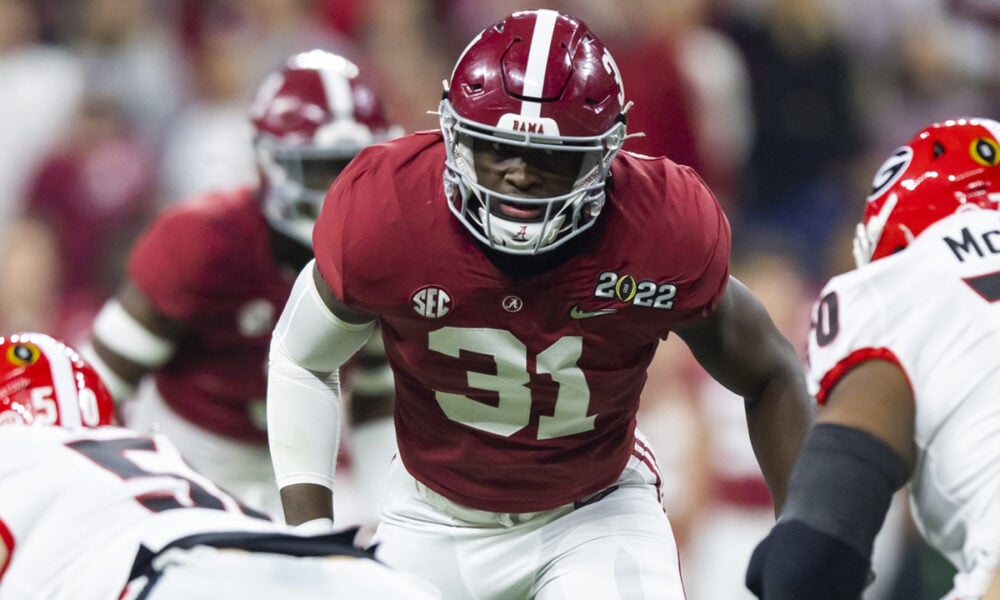
In this year’s NFL Draft, we saw a staggering number of edge rushers selected. There were seven in the first round alone, another ten taken on day two, and 32 all in all. Defensive positions are all not officially defined, so your count might be slightly different, but you have to squint pretty hard to get down to recent averages.
Over the past decade, there have been 35 edges selected in the average year. From 2000 through 2002, the average was slightly under 25. Over the same period, the average of day one-two edges has been a little under 12, compared to 17 this season.
And yet here’s the curious thing. Dynasty IDP appetite for this big, bumper incoming class is muted to the point of apathy. Will Anderson Jr is being treated as an incoming star, but the rest of the class is in a very different situation.
In the rookie draft of one of the more feted IDP leagues No Position Left Behind, Anderson was selected at 2.03. But first-round picks were available as late as the sixth round in Nolan Smith.

This is not a new phenomenon at all. In recent years Carlos Basham Jr, Payton Turner and Joe Tryon-Shoyinka were all examples of similar drops for first-round draft selections. So, we have an interesting dynamic; teams are drafting edges more, and earlier. But the IDP dynasty world is letting these guys slip late in rookie drafts. What’s going on?
To get to that we need to understand a few things. Firstly, this chart shows how many edges have been drafted by year, and in which rounds.
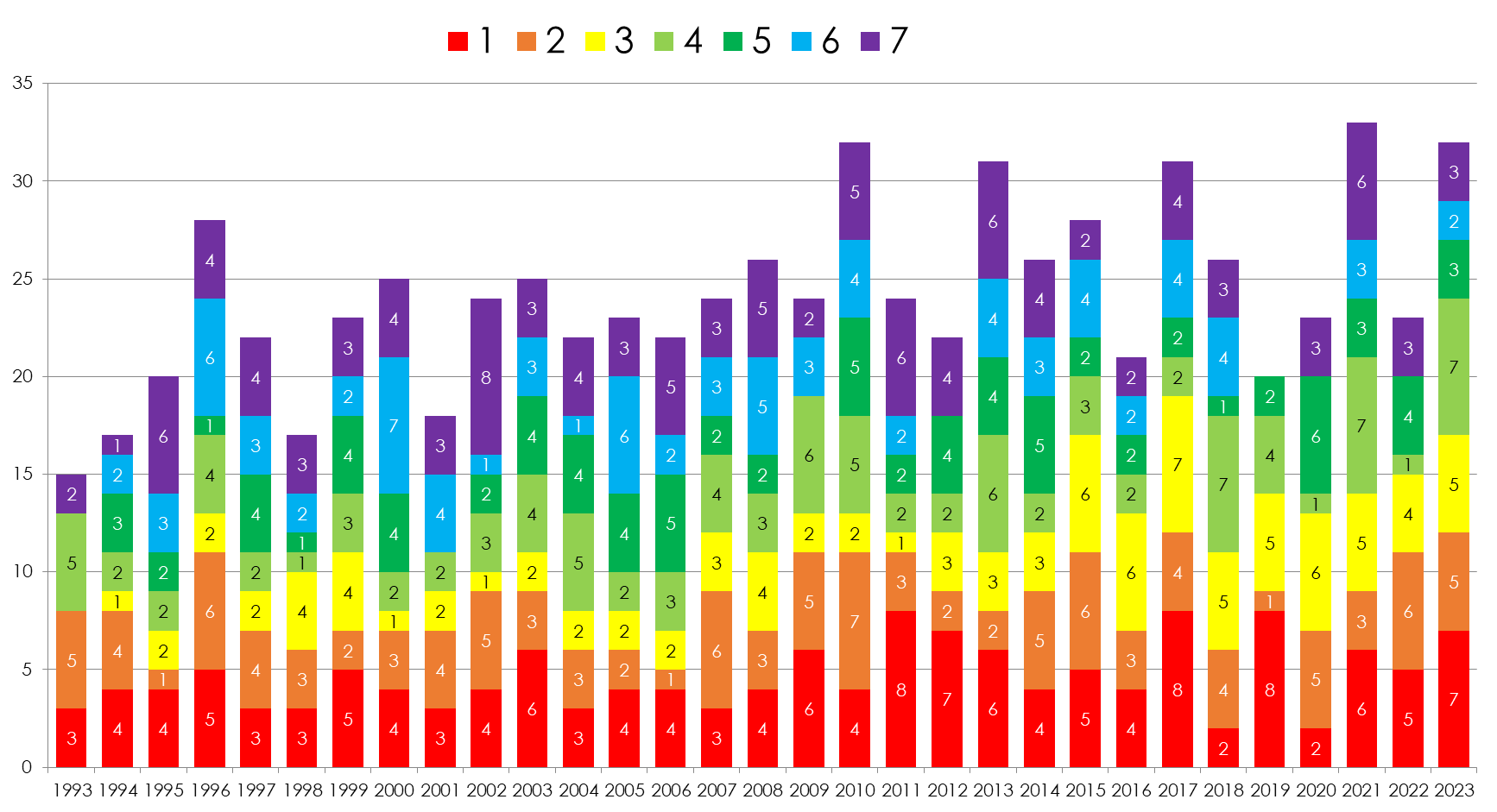
2023 was up there with 2021, 2017, 2013, and 2010 in total volume. Also, give special note to the orange and yellow bars denoting day-two edges. There’s clear growth there.
There are two obvious reasons for this – either teams are keener on finding good edge players, or they need more of them (both in relation to their competitors: the other teams).
This next chart shows total edge snaps for each team in the 2022 regular season spit by player.
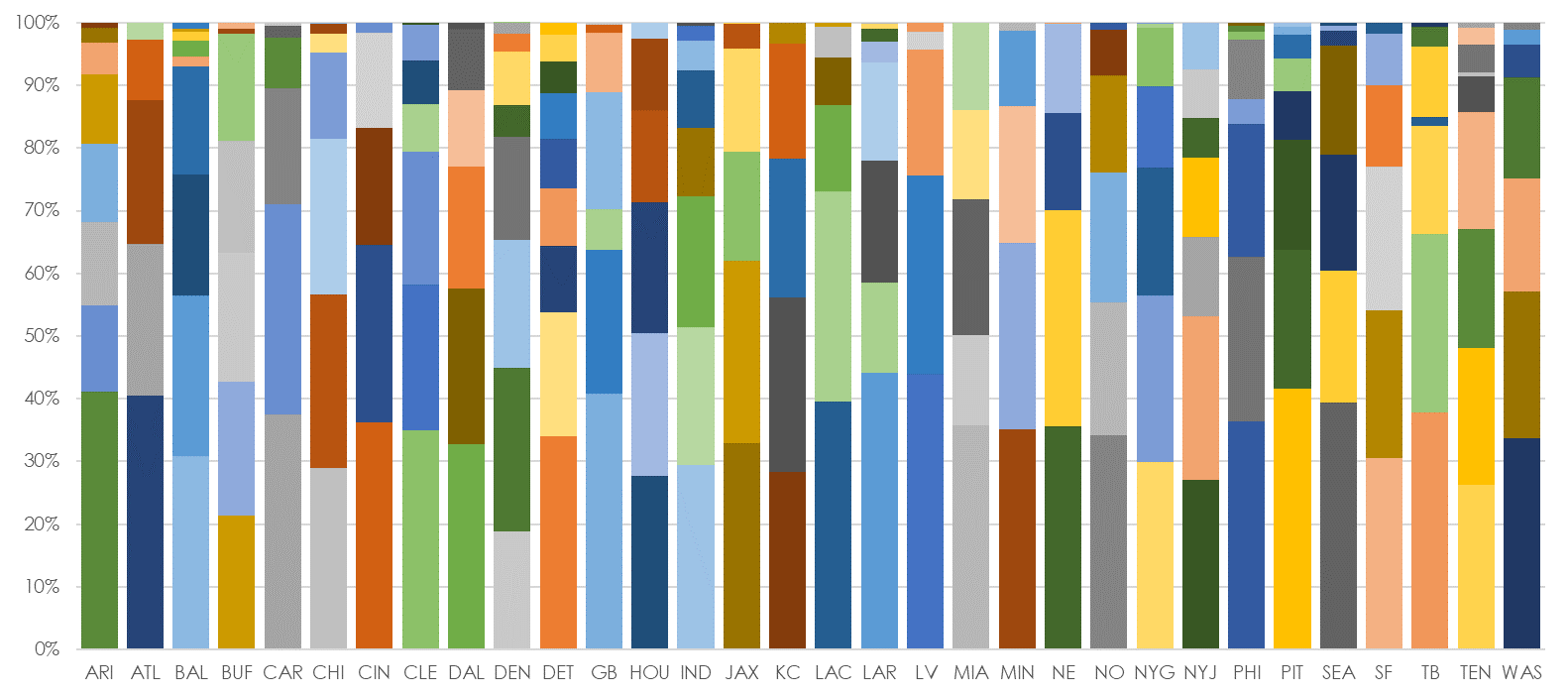
The main point here is that very, very few teams display the classic two-starters-and-some-reserves distribution. A few still lean that way (the Panthers, Bengals, Vikings and Steelers at times) but way, way more teams have fully embraced a deep rotation each week at the position to keep players fresh.
That’s a difficult thing to show though, which is probably why it’s snuck under the radar of public consciousness. Let’s look at how much edges have played over time. This chart breaks edges down into 100-snap bands and tracks them over time:
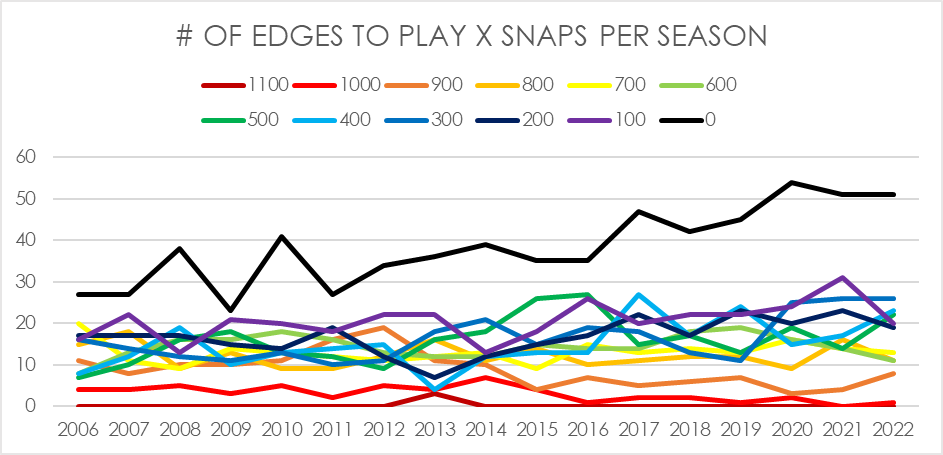
You can see that we’re seeing a lot more edges get on the field for a small number of snaps, but the rest of the information is muddled and unclear.
This is the same data shown in a different format:
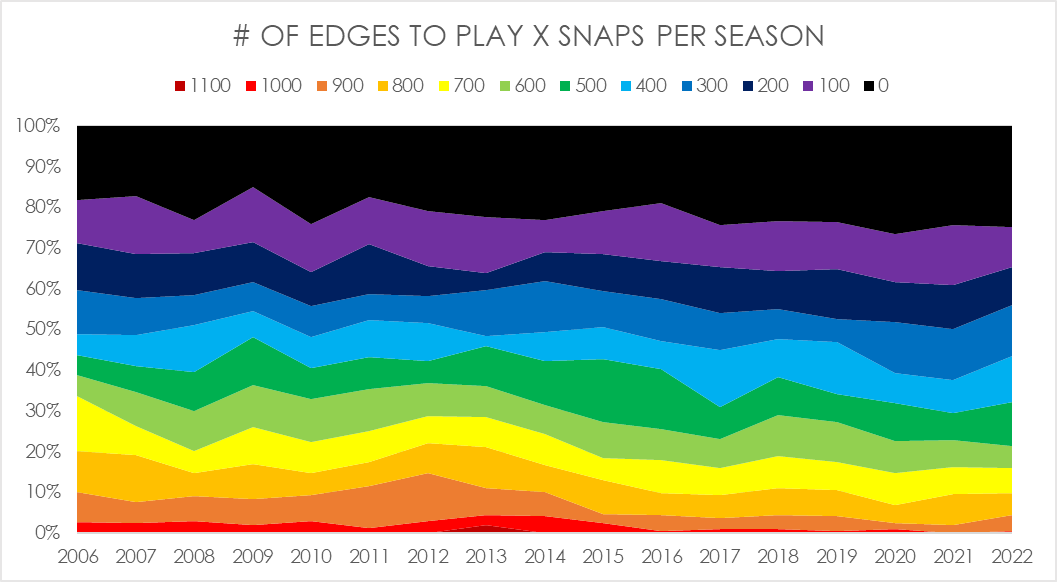
Proportionally the trend is visible here. The number of edges playing very high snap counts is dropping over time. Back in the 00s, 20% of edges played at least 800 snaps. Now that’s closer to 10%. Back then 30% played 700 or more snaps. Just 16% did so in 2022.
Here’s a table showing how many regular season snaps the top 30 edges (ranked by playing time) played per season. I’ve included a little sparkline to the right so you can see the trends.
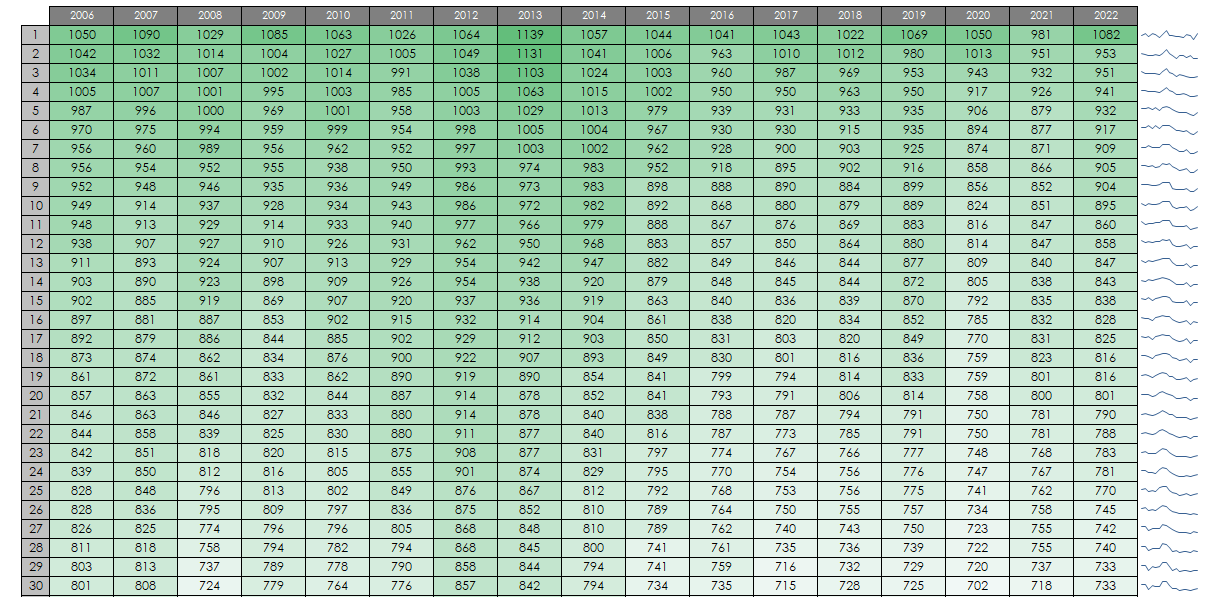
And this is the crux. Each line appears not to vary much on its own. In 2006, Kamerion Wimbley played 1,050 snaps. In 2022, Maxx Crosby played 1,082. That doesn’t seem like a decline.
But while individual seasons and data points vary we can see clear downward trends. And remember we now have a 17-game season. So there’s a downward trend for playing time among even the top stars while playing one extra game a season.
This brings us back to rookie drafts. The average dynasty player might not be able to articulate a lot of the data behind it, but they know that where once highly drafted players at this position were rare, now they’re more plentiful. And on top of that, they’re very likely to be part of a flat rotation rather than be expected to come in and play high volume as a starter.
That’s the problem in 2023 with Tyee Wilson, Lukas Van Ness, Will McDonald, Myles Murphy, Nolan Smith and others. Clearly their new team thinks they can be good players. But they are going to be one (hopefully good) part of a deep unit. A first-round edge in recent years has averaged around 500 snaps, compared to the ~900 the top IDPs at the position play. That makes most of them wildly less attractive to drafters.
There are players who buck the trends of course. Will Anderson may well see a huge amount of volume even as a rookie after the Texans invested so much in him. One or two other players will likely end up playing more than is ideal due to roster depth and injury. But on the whole rookie edges are coming in as rotational pieces, and the fantasy value of those has limited appeal in sit/start leagues.
So, how can we change that? If teams are spending high picks on these players to perform a defined role, shouldn’t the fantasy world value that?
There are a couple of obvious changes you can consider if you are willing to challenge paradigms.
Firstly, consider bestball scoring for IDP. Teams increasingly want a stable of pass rushers, rather than a couple of stud starters. This means that those sacks and big plays can and will come from various sources on an unpredictable timescale. Bestball rewards teams for building deep rosters of pass rushers rather than going all-in on a studs and duds approach, which clearly better reflects modern NFL team building.
Secondly, consider starting more edges (maybe four?) but altering scoring. In particular, you can greatly reduce tackles as a component. Starting four edges who score highly for sacks, but barely anything for tackles can reflect personal skill, and what the NFL values more than rewarding players for the opposition deciding to run at them.
Both are unorthodox, and given how conservative the fantasy world is, struggle for traction. But fantasy football was mostly designed in a different era of football. When teams behaved differently, and understanding of what is good and important on the field was very different. Football changes rapidly. If your league stays stationary because change is scary it’s becoming more and more anachronistic.
The NFL is changing how it deploys and drafts edges, which is why so many highly drafted rookies at the position have limited appeal to dynasty teams. That’s not going to suddenly reverse. If anything, it will increase. You need to at least be aware of the trend, regardless of whether you want to change your league to adapt.
Good luck with your rookie drafts!
- Ten IDP Fantasy Football Stats You Need to Know after Week 16 - December 29, 2023
- Ten IDP Fantasy Football Stats You Need to Know after Week 15 - December 22, 2023
- Ten IDP Fantasy Football Stats You Need to Know after Week 14 - December 14, 2023


































































